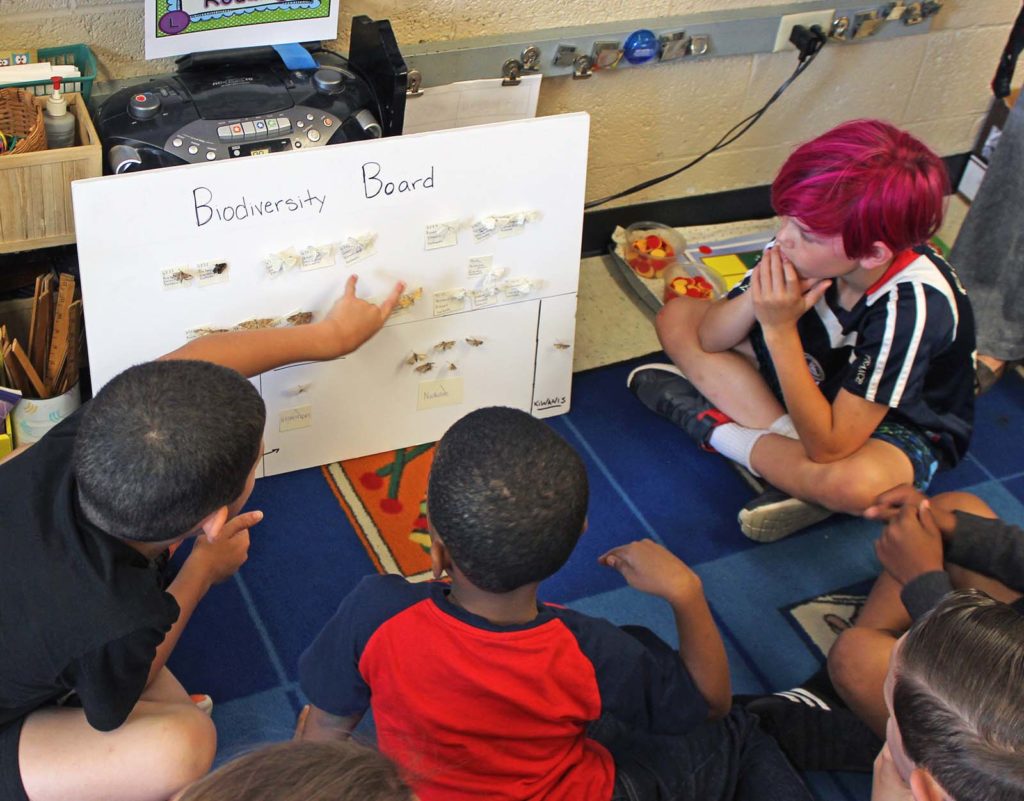Category: Tag: Biology
To work towards our mission to innovate and inspire equitable, large-scale improvements in STEM teaching and learning through technology, we make our STEM resources free and our research findings accessible and usable. Achieving such an ambitious mission takes countless partners and perspectives, and we are thrilled to collaborate with teachers, students, scientists, and researchers. In […]
Michigan State University and the Concord Consortium are collaborating on MothEd to design, implement, and test curricular materials and educator supports that give elementary and middle school learners agency in decision-making while they explore the ecology of local moths.
Felicia Yu would love to take a road trip up the West Coast with stops in Ashland (for the Oregon Shakespeare Festival), Portland, Seattle, and Vancouver. It’s no surprise that part of her dream vacation also includes “hitting up every major botanical garden along the way,” since she holds a master’s degree in horticulture.
It’s not every day that a 9th grade student becomes enamored with pond scum. “The first time I saw a sample of pond water under a microscope,” says Rebecca Brewer, “I was hooked.” Until that time, she had never considered the microscopic world, but once she saw the “alien-like” critters swimming in that sample, she wanted to learn more. “That eventually transcended into wanting to share that thrill of discovery with others.”
Integrating computational thinking into core science content and practices is a major goal of our InSPECT project, which is developing hands-on high school biology investigations using simple electronic sensors with Internet of Things (IoT) connectivity—a far cry from the simple germination experiments students usually encounter. An article in the Fall 2017 Concord Consortium newsletter (“Science Thinking […]
University of Michigan School for Environment and Sustainability, Flickr (CC-BY-2.0) A breakthrough in medical research has allowed a team of scientists to edit the DNA of human embryos to repair a version of a gene that causes cardiomyopathy, a genetic disease resulting in heart failure. While some see this genome editing technology—known as CRISPR—as a […]
Our nation’s future competitiveness and our citizens’ overall STEM literacy rely on our efforts to forge connections between the future workforce and the world of emerging STEM careers. Biotechnology, and genetics in particular, are rapidly advancing areas that will offer new jobs across the spectrum from technicians to scientists. A new $1.2 million National Science […]
Games, modeling, and simulation technologies hold great potential for helping students learn science concepts and engage with the practices of science, and these environments often capture meaningful data about student interactions. At the same time, intelligent tutoring systems (ITS) have undergone important advancements in providing support for individual student learning. Their complex statistical user models […]
One way to tell if a plant is a plastic fake or not is to touch a leaf. If it feels cool, the plant is a real one. Have you ever wondered why a leaf feels cool? (A leaf of an indoor plant always rests at about the room temperature, plastic or real. It …
Is a moth warm-blooded or cold-blooded? If you google this, some would tell you it is cold-blooded. They are not completely right. This infrared study shows how a moth warms up before it flies. So at least a moth is warm-blooded when it moves.Click to …


